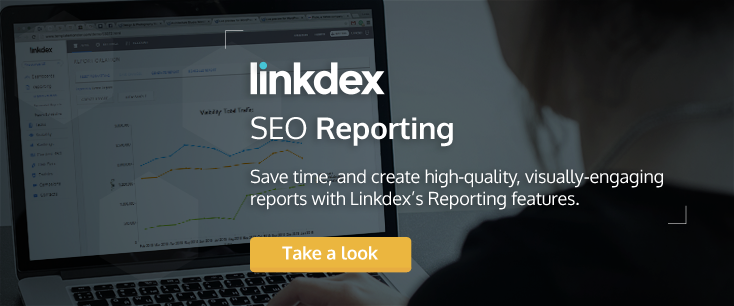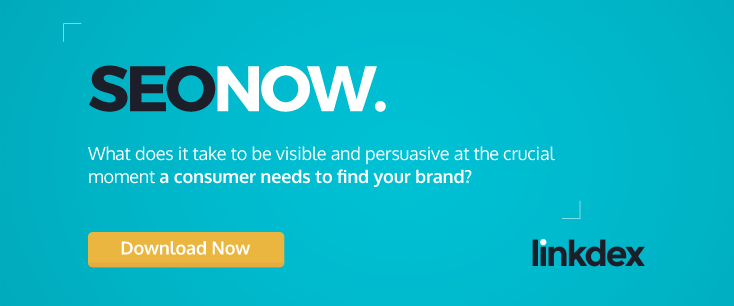Branded publishing is a oft-debated topic in the digital marketing industry. Many brands have dedicated publisher sites, digital magazines, or blogs, but ROIs and attribution remain complex to measure. What are the best examples of brands doing branded publishing well? And what can we learn from their efforts?
As digital marketers, we know content marketing is important, and as a extension of this, that brands are increasingly becoming publishers in their own right. Coca Cola’s ‘Journey’ is one of the frequently cited examples of a brand whose publishing forms the backbone of their content marketing.
And the soft drinks manufacturer is far from alone when it comes to branded publishing. In recent years, brands in industries ranging from tech, autos, and travel have all upped their content marketing game, either with digital magazines, digital content hubs (dedicated publisher websites), or simply a quality blog — and often it’s a combination of many or all of these. We’ll explore examples of these in greater detail below.
The branded publishing debate
Brand publishing as a topic, is not without it’s own share of debate. Mark Higginson, writing on Sparksheet, wrote on how the average number of shares for a piece of content on Journey received just a spattering of shares, limited comments, and that “two-thirds of posts received no comments at all”. This he suggested, was an indication that Coca Cola’s branded publishing was falling short of it’s goals:
“One of the biggest brands in the world generates next to no interaction through its primary window to the world.”
-Mark Higginson
Higginson also revisited the concept earlier this year, where he expanded on the concept incorporating backlink performance as an additional metric, pointing out that a great deal of branded content also performs poorly in this regard.
Cleary, branded content is a topic that has drawn considerable controversy, with others arguing that social share-counts should not be only metric on which branded content effectiveness should be judged. After all, on the flip side, would a large number of social shares necessarily mean that the content is generating meaningful interactions and engagement? Perhaps not — for if the purpose for a piece of content is to serve as a touchpoint in a consumer’s purchase journey, a social share is just one possible interaction in what we know are often much more complex buying cycles.
The thing with content marketing…
The issue does highlight what is undoubtedly the biggest problem for content marketers. How do you measure the effectiveness of your branded content? Share-counts and backlinks may be the most widely stated metrics, but likely due to the fact that they are the easiest to quantify, and not because they are the most indicative of effectiveness.
In other words, just because content performs less well than expected in terms of shares and links, this doesn’t necessarily mean the content isn’t performing. And in the absence of quantifiable metrics, impact on bottom line revenues remains a difficult area to assess and properly attribute (short of a/b testing the entirety of a brand’s content marketing, we probably need to accept that there will always be a degree of debate about whether of not [x] brand is doing content marketing, or branded publishing well — and even this would only give a channel-wide measure of efficacy).
Ultimately, the hard truth for many brands at the moment is probably that they aren’t able to measurably quantify the effectiveness of their publishing and content marketing. Not investing in content however, remains too great a risk. So how are brands approaching their branded content?
15 Digital Content Hubs from Brand Publishers
Despite the uncertainties, there are many brands who are investing in branded publishing. Here are fifteen of the most notable publishing efforts from top brands. In each case, we have also included total and average share counts over the past twelve months (as of May 9th 2016) from BuzzSumo.
1. Red Bull
Red Bull feature consistently in any list of top content-marketing or brand publishers, and for good reason. Few brands capture an audience so well with regards to their branded publishing, and focusing on emerging niches such as adventure sports and gaming has been highly successful for the brand.

If there’s one thing that defines the brand’s digital publishing — it’s conviction. The Red Bull website _is_ the publication (no crafted articulations about caffeinated fizzy drinks here), meaning their domain is a wholehearted commitment to digital publishing. Perhaps more so than any other brand, Red Bull have proved the effectiveness of branded publishing in building value and engagement. The volume at which they publish, and the respective average share count show healthy figures too.
Articles analyzed: 14,342 Total Shares: 13,712,691 Average Shares: 956
2. General Mills — Tablespoon
General Mill’s Tablespoon is an media rich website for recipes and food ideas. Design and navigation is clean and simple, and free of General Mills branding. Tablespoon’s priorities seem to be firstly to act as publisher with considerable freedom, and to provide value for consumers, over than any obvious marketing agenda.

3. Intel — iQ
Intel’s iQ is a tech culture magazine covering fashion, sports, gaming, health and lifestyle, with the intention of “[bringing us] deeper into the lives of people and the technologies they are using to change the world.” Although they may not publish as often, their content covers exciting and progressive breakthroughs in tech, such as solar powered cars, and tends to be widely consumed.
https://youtube.com/watch?v=6ELuq3CzJys4. Coca Cola — Journey
Unlike Red Bull, Coca Cola’s publishing on journey feels more heavily branded (and perhaps this could be a barrier to some for consuming the content freely). Certain things do come across in their messaging, the brands global values are reflected in stories from all over the world. Journey does give them a place to document their consistent stream of amazing content moments.

5. Target — A Bullseye View
Target’s publishing operation, A Bullseye View, separates itself from the typical corporate blog on the strength of it’s editorial. They do a great job of blending their corporate news agenda with more consumable information. For example, a post announcing the opening of a Chobani Cafe is rounded off with a enticing recipes for Chobani yogurts.

6. Adobe — CMO.com
CMO.com is Adobe’s digital publication, specifically catering for CMOs and senior digital marketers. As reported on velocitypartners.com, according to editor in chief Tim Moran, “CMO.com fills a need for today’s marketers, in that it helps them try to understand the marketing and business issues that have arisen in our new digital world. Our readers […] are hungry for good [and] independent information”.

7. NerdWallet
NerdWallet are the leading finance comparison website in the US. A hugely competitive niche, content forms a key part of what distinguishes the brand from their competitors. As a study by Linkdex discovered, they operate an prolific publishing schedule, written by a rich network of authors, that serves niche search queries as well as the high volume head terms.

8. American Express — Open Forum
American Express’ Open Forum is a great resource for small businesses. Like Target’s A Bullseye View, it’s the quality of the editorial that distinguishes their publishing efforts. Many of the posts are authored by genuine small businesses owners, imparting some of the lessons they’ve learnt, making it a great resource for like-minded businesspeople.

9. P&G — Everyday
P&G everyday is a great example of a branded content / lifestyle magazine from a leading FMCG brand. The site has a membership scheme, and offer coupons for their products, as well as content that is current, such as their “Thank You, Mom” campaign for the Rio Olympics.

10. Moz — YouMoz
YouMoz is “an SEO and online marketing blog created by the readers of Moz”. The Moz community is known for being one of the strongest and most engaged in digital marketing, and YouMoz has been a fantastic platform for the brand enabling their users to share content and add value. Average share count shows that the content is well shared.

11. HP — Matter
HP’s digital magazine, Matter, has a fresh and responsive look and design, which supports their excellent editorial. Matter often runs content around a particular theme — the current explores data, privacy, and other technological issues for children and younger generations.

12. Shopify
Like Nerdwallet, Shopify run an extensive blogging schedule, with a clear focus on publishing insightful “How to…” and “Why…” articles for their audience. Often publishing several times a day, and undoubtedly with a rich author network, Shopify are building a formidable resource for digital marketers and small business owners.

13. momentology
This one may be a bit cheeky / meta — but momentology itself is a branded content site, sponsored by Linkdex. Editorially, we operate completely independently, and our sole goal is to create the best content for consumer-centric digital marketers on the web.

14. IBM — Voices
IBM Voices is a bit different in that it aggregates content that has been shared by a curated list of Twitter influencers. Voices functions effectively as a content hub covering some of the best content around analytics, big data, and other progressive technology topics from all over the web.

15. GE — Txchnologist
Txchnology is GE’s digital magazine covering emerging tech, science, and trends. Whilst they may not publish that often, what they do release is in-depth, and of very high editorial quality. Their mission is to “offer an optimistic, but not utopian, take on the future and humanity’s ability to tackle the great challenges of our era through industry, technology and ingenuity.”

Branded publishing
The above examples show that one of the things that makes successful branded publishing is a commitment to high-quality editorial. Some, such as Intel, HP Matter, and Txchnologist do so at the expense of scale, publishing better but less often.
Ambitious brands may wish for their content to become an everyday part of their customer’s lives (just as Coca Cola defined in their 2020 Content strategy) but competing for daily eyeballs with dedicated publishers is no easy task.
The fact that Yahoo have recently reported flat earnings (there are current ongoing talks about a possible acquisition), and with the Guardian having also announced cutbacks to their editorial operations in the face of “incredibly challenging” conditions, it’s no wonder that there is so much controversy about the effectiveness of branded publishing.
One possible course of action will be for brands to focus on their particular niche, and add as much value there for a specific audience. Red Bull are the prime example of this, not trying to be all things to all people, but specifically to focus on emerging niches. NerdWallet and Shopify have also done well publishing for a specific audience.
The value of branded publishing may not be something that can be easily quantified, and winning consumer engagement remains a highly challenging area. As the above examples illustrate however, there are plenty of opportunities for brands to take on that challenge.





